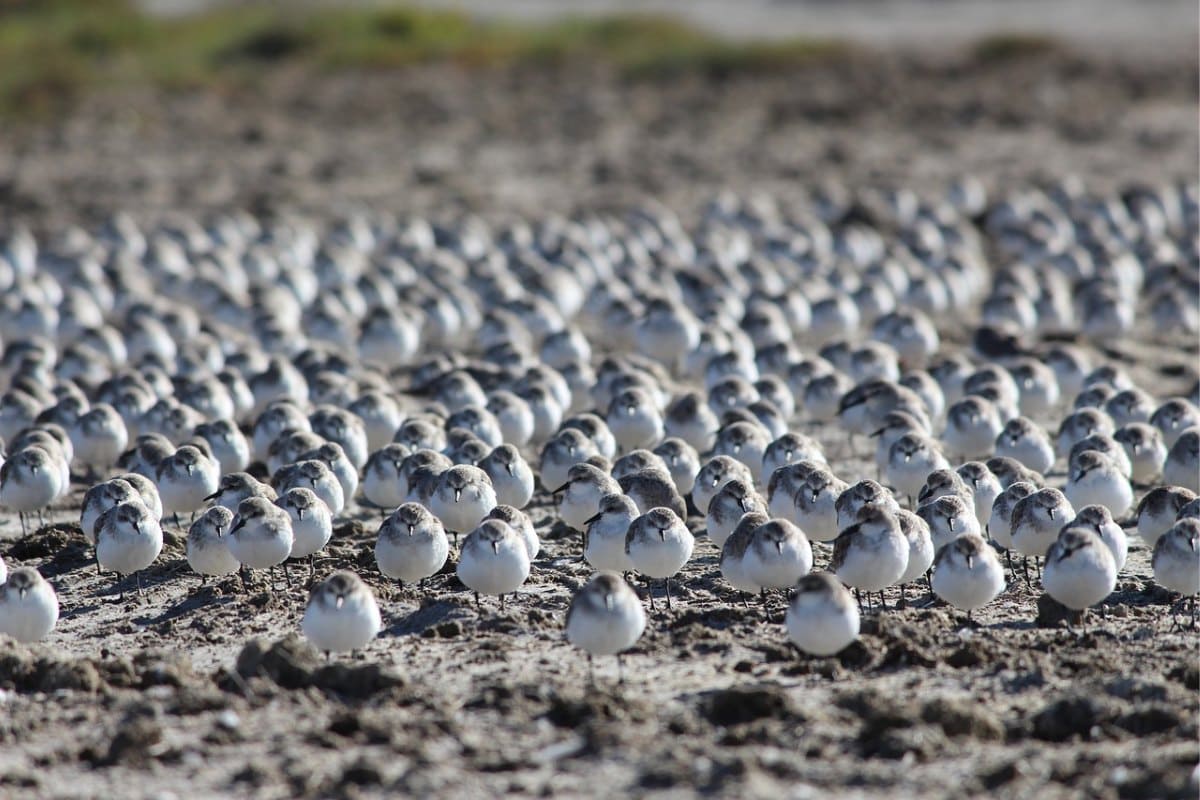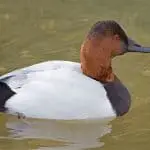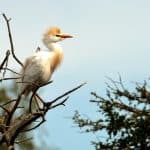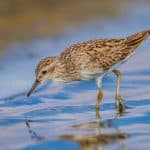Common Name: Red-necked Stint
Scientific Name: (Calidris ruficollis)| Size | Diet | Range in Hawaii | Status in Hawaii |
|---|---|---|---|
| 5 in. - 6 in. | insects, crustaceans, mollusks, and small aquatic invertebrates | O'ahu, Maui, Moloka'i, and Big Island | Near Threatened |
The Red-necked Stint, also known as Calidris ruficollis, is a small shorebird species that is native to Asia, Europe, and North America. While the species is not native to Hawaii, it has been known to make occasional appearances on the islands as a non-breeding visitor and vagrant. With its striking appearance and unique behavior, the Red-necked Stint is a fascinating bird species that has captured the attention of birdwatchers and avian enthusiasts around the world.
In this article, we will explore the world of the Red-necked Stint, its unique characteristics, and its occasional presence in Hawaii.
Red-necked Stint
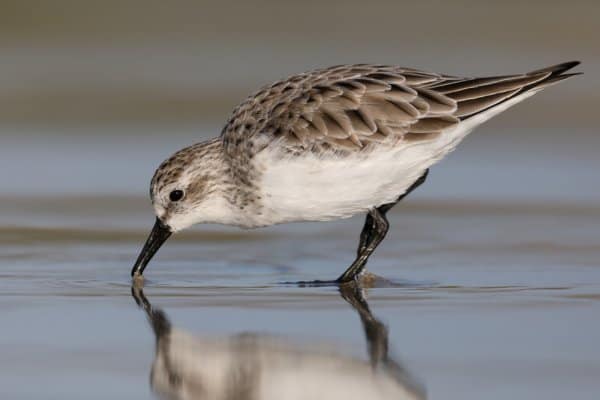
Appearance
The Red-necked Stint is a captivating shorebird known for its petite and charming appearance. With a length of around 5 to 6 inches, this bird might be small, but it’s big on visual appeal. During its breeding season, its plumage showcases a mix of warm browns and grays, adorned with distinctive reddish markings on its neck, giving rise to its unique name.
Diet
The Red-necked Stint boasts a culinary preference that mirrors its dynamic lifestyle. Its diet reads like a gourmet seafood menu: insects, crustaceans, mollusks, and small aquatic invertebrates. This dainty shorebird, despite its small size, boasts an appetite for adventure.
Its diet primarily consists of a variety of small invertebrates found in its diverse habitats. The Red-necked Stint relies on its long bill to probe the soft substrates, extracting tiny crustaceans, insects, and mollusks with precision.
Nesting
Picture a mosaic of downy feathers, lichens, and tundra grasses intricately woven together into a cup-shaped sanctuary, so finely tuned that it becomes a safe haven from the harsh Arctic elements. The Red-necked Stint’s nest-building prowess is nothing short of remarkable, as they manage to create a cozy shelter in an environment that seems far from hospitable.
As the sun graces the northern horizon for extended daylight hours, these diminutive birds engage in a captivating dance of survival and procreation. Males flutter their wings in a rhythmic display, a symphony of motion and color to capture the attention of potential mates. Once courtship is complete, and the pair is bonded, their shared endeavor commences: the nurturing of their soon-to-be offspring.
The Red-necked Stint’s nesting period mirrors the fleeting Arctic summer, leaving a small window to rear their young. With eggs like precious pearls, speckled and camouflaged to perfection, the parents take turns incubating their treasures. Against a backdrop of stunning icy vistas, their devotion paints a heartwarming scene of dedication in the face of adversity.
Behavior
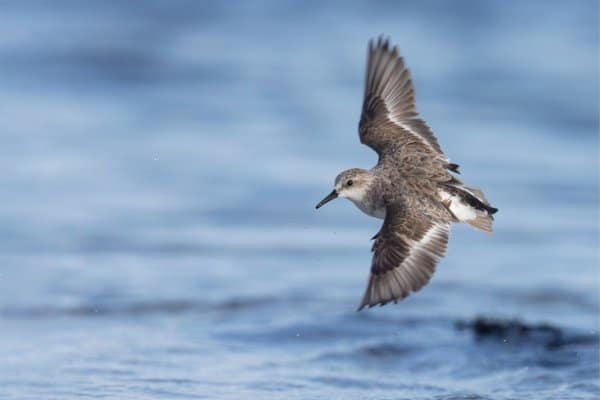
Watch as these avian acrobats embark on their extraordinary journeys across vast distances. With wings that seem almost too delicate to bear, Red-necked Stints are intrepid travelers, covering incredible distances during their migrations. From their breeding grounds in the Arctic to their wintering sites in far-flung coastal areas, these birds exemplify endurance and precision in their seasonal travels.
Upon reaching their breeding grounds, witness their choreographed courtship displays. Males become feathered virtuosos, showcasing their vivid plumage and performing intricate aerial dances to attract potential mates. These displays aren’t just for show; they communicate strength, vitality, and genetic fitness, ultimately leading to the formation of devoted pairs.
Once paired, the Red-necked Stints’ cooperative nature takes center stage. Their communal behavior extends to their nesting efforts, where neighboring pairs often nest in close proximity, creating a supportive community. This arrangement allows for better defense against predators, a heightened vigilance that ensures the safety of their nests and precious eggs.
Observe their feeding frenzy on mudflats and shallow waters, where their slender bills deftly probe the sand and mud for tiny invertebrates. With each foraging motion, they reveal their remarkable adaptation to their environment, demonstrating a finely tuned interplay between form and function.
But perhaps most remarkable is the Red-necked Stints’ synchronization during migration. Flying in V-formations or long lines, they harness the power of teamwork to battle headwinds and navigate challenging routes. The unison in their flight showcases remarkable social intelligence, where every individual contributes to the success of the group.
Habitat
The Red-necked Stint thrives in two contrasting worlds. In the Arctic, it crafts intricate nests amidst the vast tundra to raise its young. During migration, it finds solace along coastal mudflats and estuaries, where it adeptly feeds on marine invertebrates.
This small bird’s ability to adapt to both harsh and dynamic habitats showcases its remarkable resilience.
Range
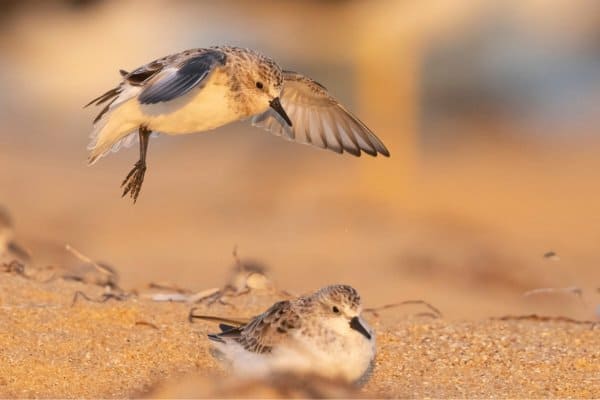
The Red-necked Stint, primarily an Asian species, finds its way to Hawaii as a non-breeding visitor and vagrant. This shorebird’s sightings in Hawaii have been noted across the islands, from Northwestern Hawaiian Islands to Southeastern Hawaiian Islands, with observations including individuals on O’ahu, Maui, Moloka’i, and Hawai’i Island.
Conservation Status
The Red-necked Stint (Calidris ruficollis) has been classified as “Near Threatened” on the IUCN Red List. This designation reflects the species’ susceptibility to various threats that could potentially lead to a higher risk status in the future.
Interesting Facts
1. Navigational wonders
During migration, Red-necked Stints exhibit an extraordinary ability to navigate. They can sense the Earth’s magnetic field and use celestial cues, such as the position of the sun and stars, to guide their journeys across vast distances.
2. Nature’s engineers
Beyond their nests, Red-necked Stints also create shallow depressions called “scrapes” on their breeding grounds. These scrapes serve as resting sites and can be essential for conserving body heat in the cold Arctic environment.
3. Social learning
Juvenile Red-necked Stints learn migration routes and behaviors by following experienced adults during their first migrations. This social learning helps them navigate the complex challenges of their journeys.
4. Record-holder in the East
Red-necked Stints hold the record for the highest recorded number of shorebirds seen at a single location in the East Asian-Australasian Flyway, with flocks numbering in the tens of thousands.
5. Team players
While foraging on mudflats, Red-necked Stints sometimes form mixed-species flocks with other shorebirds. This behavior provides them with safety in numbers and the advantage of shared vigilance against predators.
Frequently Asked Questions
1. How long do Red-necked Stints live?
Red-necked Stints have been recorded living for up to 10 years, despite the challenges of migration and predation faced by many shorebirds.
2. What are the challenges faced by Red-necked Stints during migration?
Red-necked Stints encounter numerous challenges during their migrations, including exhaustion, unpredictable weather, finding suitable stopover sites, and avoiding predators along their journey.
3. Are there any ongoing conservation efforts for Red-necked Stints?
Yes, various conservation organizations and researchers are working to track the movements of Red-necked Stints, protect their critical habitats, raise awareness about their importance, and address the threats they face.
4. Are Red-necked Stints common sights for birdwatchers?
Red-necked Stints can be challenging to spot due to their small size and remote breeding locations. However, birdwatchers might catch glimpses of them during migration when they visit coastal areas.
5. How do Red-necked Stints maintain their energy levels during long migrations?
Red-necked Stints have efficient metabolisms that allow them to store energy as fat before migration. They utilize these energy reserves to fuel their flights and maintain their stamina during long journeys.
